7
WHY IS THE BAD GUY ALWAYS MORE INTERESTING?: STORYTELLING, CONFLICT, AND BRAND PLATFORMS.
AD VETERAN RICK BOYKO explained the ad biz very simply: “We are storytellers in service of brands.”
Our job is to get our brands' stories into the national conversation and ultimately into the firmament of popular culture. “To make them famous,” as they used to say at Crispin. The thing is, we don't get people talking about our brands by reading them a list of product benefits. People talk in stories, and so must we.
There's a great book I recommend to ad students. It's not about advertising but screenwriting: Robert McKee's Story: Substance, Structure, Style, and the Principles of Screenwriting. McKee makes a convincing case the human brain is wired to hunger for story—that a structure of three acts, taking us from problem to unexpected solution, is something our brains crave. Story just sucks us in. Even when we're watching some late-night TV movie and we know how the story's going to end, we stay up later than we ought to just to watch the dang thing, right? Theorists suggest story is a cognitive structure our brains use to encode information. So, in addition to its drawing power, story has lasting power—it helps us remember things.
This chapter is about finding the story inside a brand or product.
All stories run on conflict.
Let's stop for a moment and imagine Star Wars without Darth Vader.
We'd open on young Skywalker, maybe, holding his light saber and then … uh, and then, uh, he puts it down and goes inside, probably for dinner or something.
The moral of this non-story is this: if you don't have conflict, you don't have a story.
All drama is conflict. Every movie you've ever seen had conflict at its core. Every fairy tale, comic book, sit-com, and rom-com you've ever seen, heard, or read is driven by conflict. Sadly, this observation seems to be lost on many clients and agencies, because most of the time clients seem to want to show only how great life is after purchasing their fine products. It's a happy place where nobody ever has cavities, everybody's car always starts, and no one is overdrawn at the bank. Many clients want you to cut right to the end of the movie.
The problem is, when there's no bad guy, we cut right to the happy ending and short-circuit the structure of story and its power to fascinate. I don't know about you, but life in Pleasantville is boring. Conflict* makes things interesting. Tension makes us lean in to see what's going on.
When everything is okay, we aren't interested.
You will never see this headline in the newspaper: “Area Bank Not Robbed.” Yes, we're all pleased the bank wasn't robbed today, but we're also not interested. Our disinterest doesn't mean we're bad. It's simply natural to tune out the status quo and tune back in only when the status changes.
In Seducing Strangers, author and “Mad Men” consultant Josh Weltman explained why conflict and negativity are such effective ways to communicate.
If a jaguar is near and a monkey screams in monkey-speak, ‘Hey! Danger! Danger! There's a jaguar—get out of here!' not only do monkeys, but also toucans, deer, and any other jaguar prey hearing the warning will all clear the area. In the jungle, the researchers found, warnings are understood and obeyed… . Negative ads work because people behave like animals. We are wired to heed warnings.1
Our brains are wired to heed warnings. This is not to say all ads need to be warnings, and most certainly doesn't mean “negative ads” the way I understand the term. It's just that, to be interesting, a story needs both positive and negative forces in play.
Entire brand dynasties have been built on what one might call “warning signals.” FedEx, for example. For the first decade of the company's existence, they aired commercials showing all the horrible things which happened to corporate drones foolish enough to use another service.
At the very end of an essay about branded content titled “Amping the Tension,” Pelle Sjoenelle from BBH emphasizes how critical conflict is: “So in case it isn't really clear by now, I'll say it again. Without conflict you'll have no winning formula in entertainment as a brand.”2
Without is usually more interesting than with.
Goodby Silverstein & Partners' got milk? campaign from the ’90s is another strong campaign built entirely on a tension. The strategist who helped create it, Jon Steele, called it a “deprivation strategy.”
Every commercial brilliantly imagined some scenario where not having milk in the fridge is a disaster. A big peanut butter sandwich without milk? Cookies without milk? Not gonna happen.**
Here's the scary part (or rather the boring part): in your career you're going to run into a lot of advertising briefs that'll ask you to cut to the happy ending. (“Can we just get rid of got milk? and say ‘have milk'?”). This structure of life-is-better-with-our-product is still how many briefs are written.
Take this brief, for example, for a natural foods retailer: “We believe fresh food means better health.”
Sounds like a workable brief, right? That's what we thought when we first heard it, but if you sit down and try to work with it, as we did, you may end up agreeing that it's not very inspiring. It doesn't go anywhere. The reason it doesn't go anywhere is this: creativity happens in response to a problem, and the statement “fresh food means better health” isn't a problem, it's a solution. And solutions are about as interesting as filled-in crossword puzzles. The interesting part is over. This is why cops in the movies are always saying, “Move along, folks, nothin' to see here.” There isn't anything to see there because the problem's gone by then.
In my experience, the best strategies and the best work usually come from a place of conflict and tension: strategies built on top of—and powered by—tensions. When a strategy can be built on top of one of these tensions, great work fairly bursts out of it. Like a volcano along the edge of two tectonic plates, there's a natural energy at these points of stress—a conflict of opinions or themes—that make them lively birthplaces for ideas of force and substance.
These tensions can come from pretty much anywhere.
Identify and leverage the central conflicts within your client's company or category.
Conflicting energies can be found everywhere. They can be thematic tensions, tensions peculiar to the category, or general cultural tensions. For example, a thematic tension might be “human versus machine.” Apple's been exploiting a variety of this tension since its famous “1984” commercial.
The most obvious conflict we might want to look at is our brand versus brand x. Every client has an enemy, particularly in mature categories, where growth has to come out of somebody else's hide.
Tension can also come from conflicts that exist inside any given industry. Take the financial category. I happen to be angry at all the fat-cat bankers; really angry. They got rich in 2008 crashing our economy, tipped their caddies with our overdraft fees, and nobody spent a day in jail. So perhaps the conflict I'd choose to work with would be Wall Street versus Main Street. Or lying versus truth. In Baked In, authors Bogusky and Winsor put it this way:
Think about the categories you work in and the conflicts that exist there. If you're in the traditional energy business, it's pretty obvious that you have a conflict with the environmental movement. If you're in the financial world, there's a lot of conflict around public trust. The cultural conflicts in your category are probably a bit subtler. What are the big, hairy cultural conflicts affecting your company that everyone knows about but no one really likes to discuss?3
Speaking of cultural tensions, one that comes to mind is America's fractured relationship with food. We love our “Triple Patty-Melt Bacon Bombs” and “44-Cheese Pizzas,” but then we all run to the gym so we can cram ourselves into skinny jeans.
As you can imagine, there are conflicts all over the place—our culture, our language, the brand, the category—everywhere.
- Republican versus Democrat
- Religion versus science
- Hate versus love
- Cheap versus expensive
- Big business versus small business
- Red versus green
Here's why all this conflict stuff is worth talking about. Wherever you find polarities or opposing energies, you'll find conflict. And where you find conflict, you'll find the rudiments of story. The trick, then, is to pit these opposing energies against each other and look for the possible stories to emerge.
To spark story, start with this versus that.
Okay, what if a creative director walked in and said, “I need each of you to show me a campaign for Coca-Cola. I need it tomorrow for a noon meeting.”
Gulp. That's a tall order. I can just feel my brain scrambling to find some place to start. My pen would freeze as I tried to take in the vast universe of Coca-Cola–of soft drinks, of thirst, of refreshment, of movies, of Americana. The possibilities might make smoke come out of my ears.
But now imagine if the creative director had asked, “I need you to do a Coke versus Pepsi ad.”
That problem feels different, doesn't it? Why?
Well, when the problem is put to me this way—in a this versus that framework—for some reason, I feel ideas start to form. I feel a little traction under my tires. I have a general sense I could maybe try this first, then maybe that. Things start to bubble up from my subconscious and I feel like I have somewhere to start.
You may find this same thought experiment helpful when you're searching for story. Sometimes, to get my narrative engine to turn over, here's what I do. (It's kind of silly, but it often helps.) I draw a rectangle with a line down the middle and imagine the line represents the word versus. Then I let the two spaces on either side represent any kind of conflict that comes to mind: life with the product versus life without it. Or our product versus their product.
The conflicts you leverage can be as big as good versus evil, or as banal as Colgate versus cavities. With some products the conflicts are kind of obvious. For example, with bug killer we could start with bug killer versus bugs. Or we could do nice clean house versus house crawling with bugs. Or we could do bug monsters versus civilization. All these conflicts suggest different stories.
In my opinion, the best bad guy in recent memory was “Mayhem” for Allstate Insurance. Leo Burnett creatives brilliantly personified all the things Allstate insures you against in the form of one bad-ass mob-looking dude. I think it was one of the best campaigns in the last 25 years.
If a conflict isn't immediately apparent, make one up.
Here's the fun part. If a conflict or tension isn't apparent in a product or category, fine; make one up. Twix chocolate bars invented their own conflict with their long-running Left Twix versus Right Twix campaign.
What about a commodity product like, say, Chiquita bananas? Because Chiquita's bananas are pretty much the same as Dole's, maybe we'll find a more interesting conflict outside of the banana category. In which case, our list of story-starters might look like this:
- Good food versus junk food
- Health versus obesity
- Has its own wrapper versus canned foods
- Ready-to-eat versus crap you gotta cook
- Yellow versus “boring” colors
As silly as some of these polarities look, I'm pretty sure we could build a story around one of ’em and create some advertising way more interesting than “bananas have potassium”—which is just “milk builds strong bones” all over again. The point here is, if we can jump-start a narrative for bananas, we can probably do it for other products and other categories.*
So, start your own list. Then just go all Boy Scouts on it and start rubbing the two columns together. You'll see how it can generate sparks, heat, and ultimately story.
Brand as archetype.
If you ever fell asleep in a comparative literature class, you probably missed the lecture on “the Hero's Journey,” but it's important, so listen up.
Scholars identified a common template in stories told over the centuries, the Hero's Journey, in which a hero goes on an adventure, meets an archetype (who teaches the hero a lesson or grants him or her powers), and after winning a decisive victory, the hero returns home transformed.
The archetype is a recurring symbol or motif in literature, art, or mythology. There's the Wise Old Man, the Mother, the Trickster, the Magician, the Queen; the list goes on and it's a list anyone can come up with because archetypes are built into all our stories, movies, fairy tales, sitcoms, all of them.
Here's where archetypes apply to advertising. To get your story engine started, try seeing your brand as an archetype.
If you let your imagination be guided by the character traits inherent in each archetype, you may feel stories start to bubble to the surface. The Caregiver brands, they nurture and soothe. The Explorer lives off the land. I've come up with a few of my own brand-archetype pairings in Figure 7.2. Yours might be different. What archetype feels right for your brand? (Remember, the brand is not the hero. The hero is the customer and your brand is the archetype.)
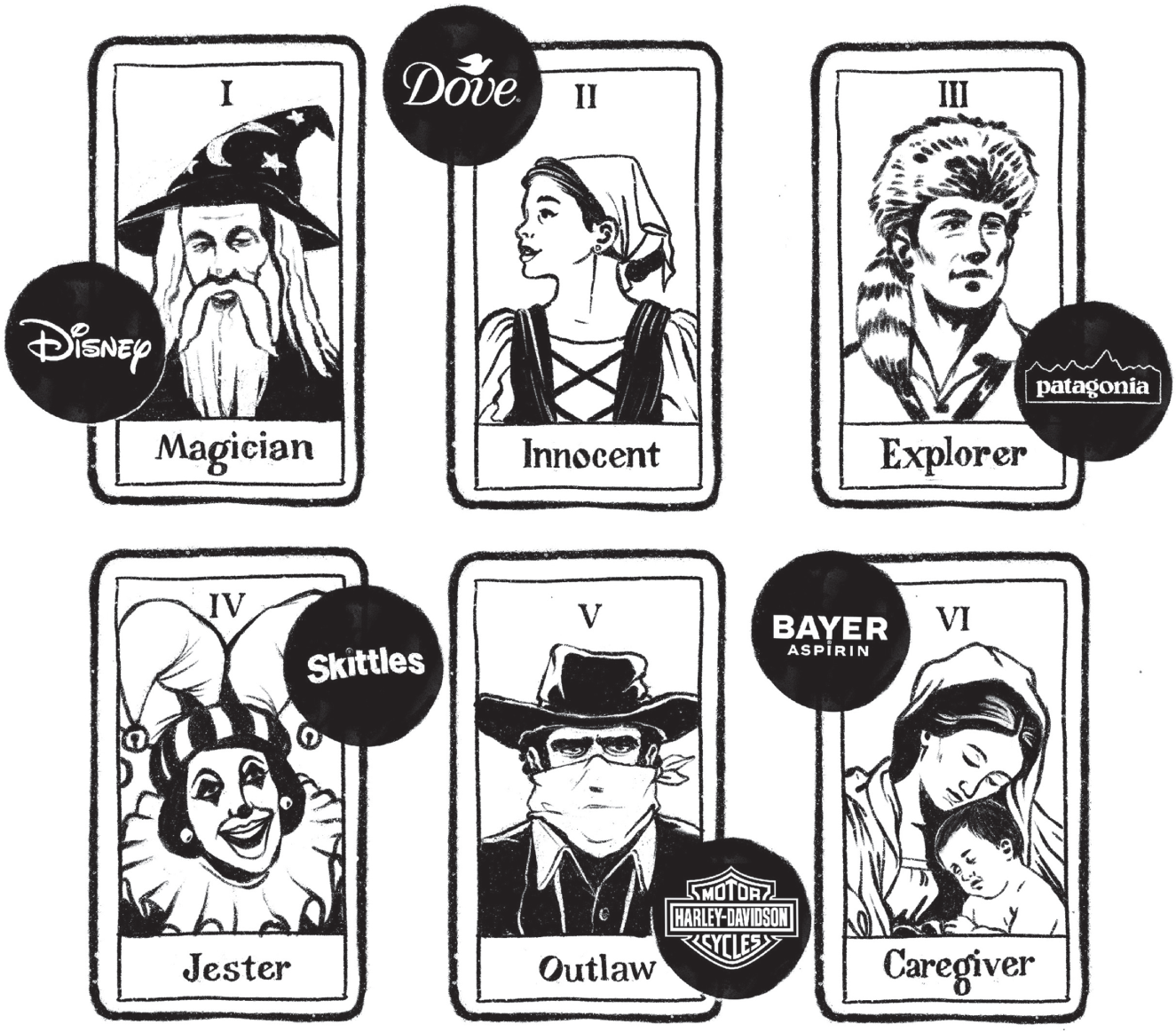
Figure 7.2 When a brand aligns well with an archetype, the narratives can be a little easier to discover.
Each of the described archetypes suggest their own stories. Disney brings magic to our lives. Dove purifies. Harley roars into town and makes all the old ladies at the quilting bee purse their lips.
In his book Disruption, Jean-Marie Dru makes the same point. “Brands are sometimes best thought of as verbs. IBM solves, Nike exhorts, Sony dreams… . Brands are not nouns but verbs.”4

BRAND PLATFORMS: THE MOTHER OF STORIES.
Campaigns versus platforms.
When you first join an agency as a junior creative person, your first months will almost certainly be spent doing all the crap jobs senior people used to hate doing, such as rewriting copy on some website or trying to write the Twitter feed of a brand like Reynold's Wrap without taking antidepressants. Yes, you've landed a job in a creative industry but for a while, there will be little for you to brag about at parties. (“Hey, ya know the little survey card that came along with your phone bill? Yeah, I did that.”)
So, you do your time because you know one day you'll get a chance to work on bigger projects, maybe steer entire brands. It may even happen soon if you're asked to work on a new business pitch.
When agencies get a chance to refresh a brand and start over, they often find it's best to work toward the highest storytelling level they can reach; a place where a brand can live for a long time.
Which makes this the perfect time to talk about brand platforms.
Platforms are ideas that create ideas.
A platform is not a campaign. For the purposes of discussion, I'll define a campaign here as a series of ads held together by similar messaging, typography, art direction, tone, and architecture. Campaigns can be great.
One great example is VW's campaign for their computer-assisted parallel-parking feature, one of which you see in Figure 7.3. It's an extremely good One Show–winning campaign worth studying and is another great example of the power of simplicity.
A platform, however, is a world. It's a world with its own rules.
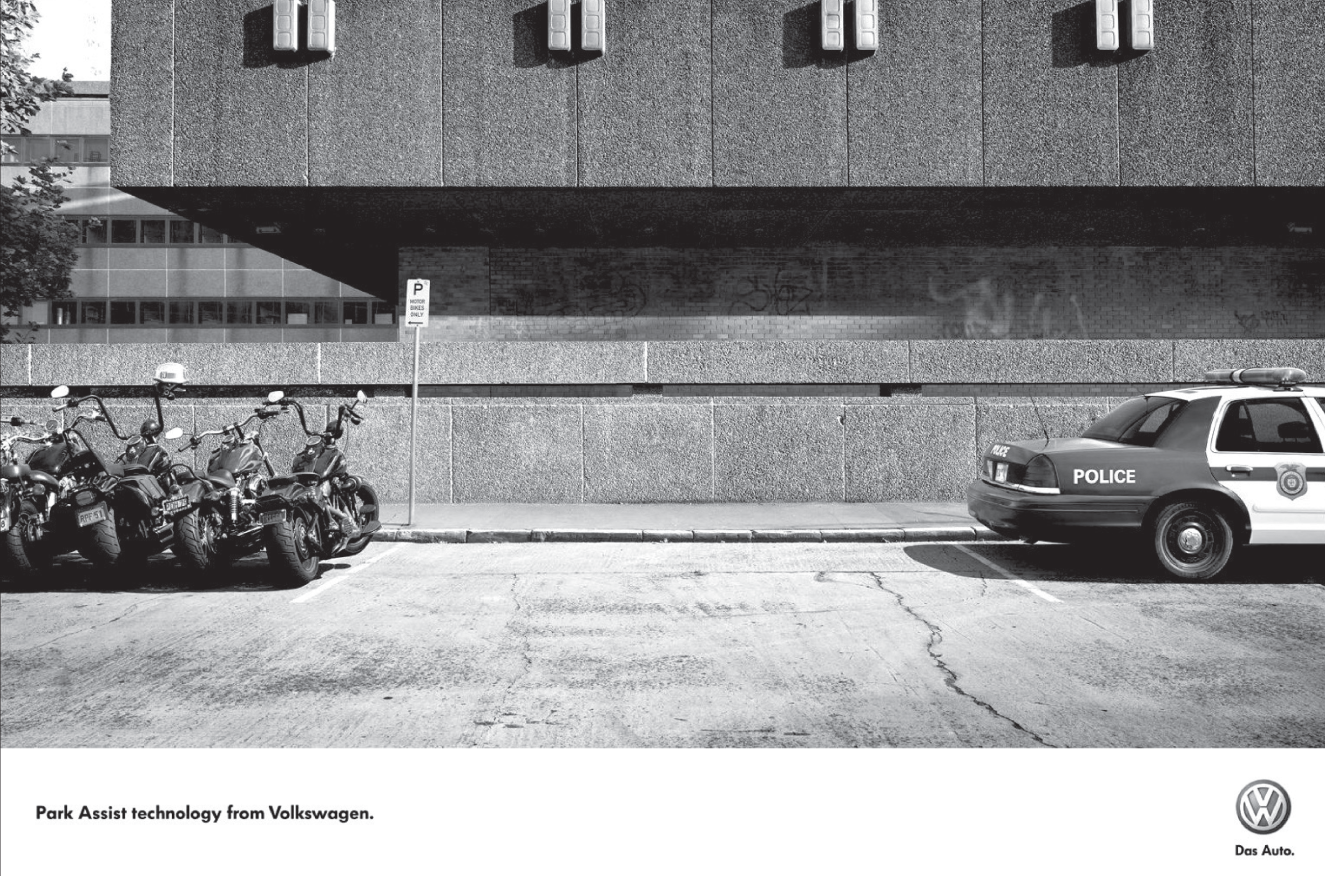
Figure 7.3 One Show–winning campaign sells the computer-assisted parallel parking in the new VWs.
Think of a campaign as a movie and a platform as a Hollywood franchise.
What distinguishes the kind of movie that becomes a Hollywood franchise? For my money, any movie that's “franchisable” creates more than just a story but an entire world, one from which many stories can spring.
As a term, world building was first popularized at science fiction writers' workshops back in the ’70s. Wikipedia's definition reads: “Developing an imaginary setting with coherent qualities such as a history, geography, and ecology is a key task for many science fiction writers.”
Take Harry Potter, for example. Author J. K. Rowling built a rich, magical world where fireplaces were travel ports and talking hats sorted students. However fanciful her world of muggles and magic was, all the Potter stories obeyed an internal logic and ran according to one set of magical rules.
Here's why the idea of rules is important: once you've created a brand platform world with rules, those rules can be used again and again to spin other stories: prequels, sequels, and spin-offs.
Here's an example of a great platform with a rich set of rules.
Coke Zero's brief to Crispin was simple: communicate Coke Zero tastes as good as Coca-Cola. In Crispin's final executions, two actors posing as brand managers for the main Coke brand were filmed trying to hire actual lawyers to sue those new Coke Zero guys downstairs—sue them for what they call “taste infringement” (Figure 7.4). In one of the many sessions filmed with different lawyers, an improv actor asked, “Can we sue them just to get it into court and humiliate them?” The lawyer answers: “It'll be dismissed. You'll be humiliated. And get fired.”

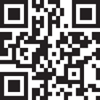 Figure 7.4 Crispin's fabulous campaign for Coke Zero. Improv actors pretended to be Coke employees trying to sue their own company. Several clips can be viewed at the link.
Figure 7.4 Crispin's fabulous campaign for Coke Zero. Improv actors pretended to be Coke employees trying to sue their own company. Several clips can be viewed at the link.
Question: what are the rules of this brand platform?
Answer: the rules of the “Taste Infringement” legal world were all about courtrooms and lawyers, all those conventions you've seen in every TV courtroom drama—“I object” and “guilty as charged” and “order in the court!”
Rules from the legal world allowed the creatives to come up with other stories. One such spin-off for Coke Zero was a sub-campaign about an ambulance-chaser of a lawyer trying to file a class action suit: “Are you a victim of ‘Taste Confusion'?”
Then, in an online execution of this idea, there was an interactive website where you could use Coke Zero's “Sue a Friend” technology. If a friend started wearing a cool shirt you wore first, just fill out the form, and sue ’em for taste infringement.
Billboards appeared, one reading: “Coke Zero tastes so much like Coke, our lawyers have contacted our lawyers.”
As you can see, a platform is an idea that creates ideas. And the richer the set of rules in your world, the more stories you can pull out of it. This is why platforms often last much longer than campaigns. To understand why, let's go back to that wonderful campaign for VW's computer-assisted parallel parking (Figure 7.3).
As great as that campaign is, it's not a world. Well, it is a world, but it's a small one with just the one rule—you change what's on either side of the parking space. It's a totally workable rule and in the next ad could feature, say, a handicapped van on one side and an armored SWAT van on the other. We could probably do a few more, but does it feel like the idea has as many possibilities as “taste infringement”?
The point here is, the more rules to your world, the better.
Two signs you have a platform: It fits on a sticky note and it starts talking and won't shut up.
It's kind of weird, but if you cannot write your idea on a sticky note, it's probably not a very big idea. Big ideas can be summed up in a sentence. If you find yourself needing more than a sentence or two to set up an idea, well, your idea probably isn't there yet.
Take that Coke Zero premise, for example. I'd write on the note something like, “Coca-Cola company sues itself for ‘taste infringement.'” It's all there, the entire idea in 49 characters.
Here's another platform that fits on a note, this one from one of my students for PetSmart, a company that makes most of its money selling dog food and cat food.
They started by looking for conflicts or tensions within the brand or category—a this versus that. And up popped an obvious one: dogs versus cats.
It wasn't quite a world with rules yet, but we've all absorbed a lifetime of dog versus cat cartoons, movies, and YouTube clips. There seem to be rules in place already.
Dogs are friendly, cats are aloof.
Dogs like bones, cats like milk.
Dogs like postmen, cats like mice.
Dogs fetch, cats not so much.
Yes, dogs and cats are totally different, but there is one thing they agree on: all the yummy stuff at PetSmart (Figure 7.5).
“PetSmart is the only thing dogs and cats can agree on.”
As soon as this student spoke this platform concept aloud in class, everybody instantly started coming up with ideas to bring it to life. “Oh, how about a campaign by cats making fun of all the stupid dog products across the aisle?” “Or a campaign where the store employees really get dogs and cats and, like, they're all friendly and helpful on the dog side but on the cat side they just look at you and push products off the shelves.”
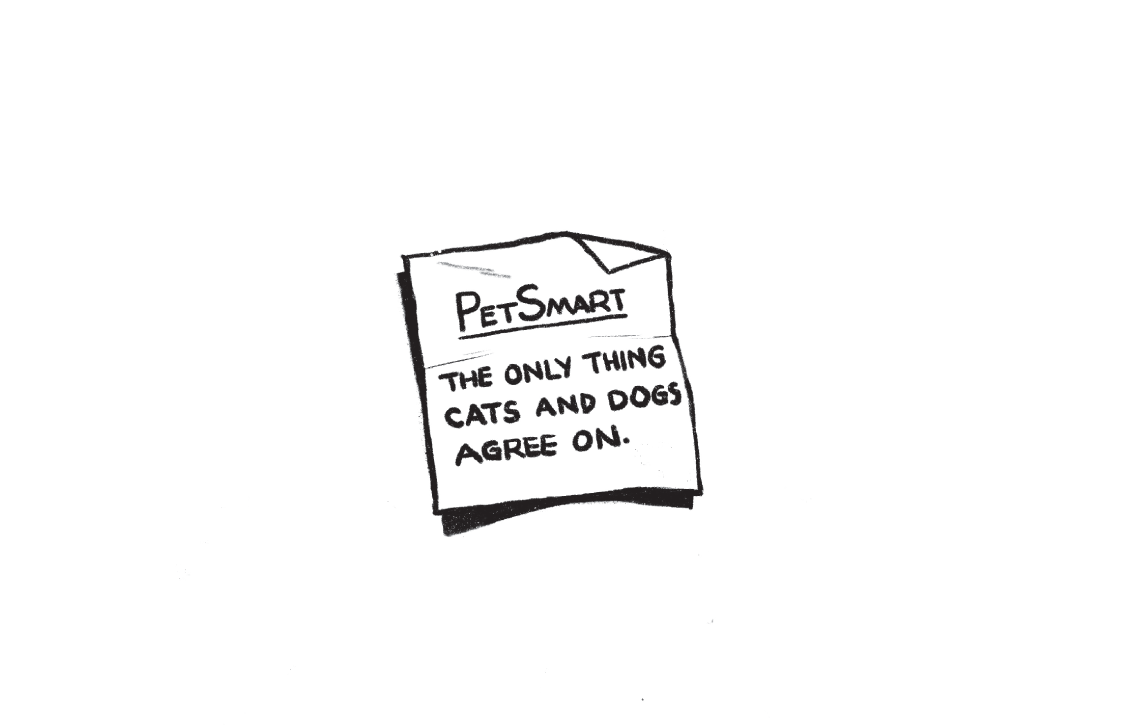
Figure 7.5 If you can't fit your idea in a small space, it's probably not a very big idea.
The thing is, when you finally hit on a working platform, you'll feel a release of energy, as all the rules start talking and the platform basically unpacks itself. The rules of the new world will be obvious and plentiful, and the fun begins when you start recombining the rules to tell the brand story in a variety of ways.
A platform isn't just a story. It is the mother of stories.
Truth + conflicts = platform.
I'm not going to call this a formula for the creative process. But folks, I gotta say, in the classroom I've seen this formula work again and again.
TRUTH + CONFLICTS = possible platform
Once students practiced playing with it, they started coming into class bearing platform ideas I'd be proud to present to any client anywhere. See if it works for you.
Start with the truest thing you can say about the brand.
Then start looking for the conflicts/tensions that happen because of that truth.
We talked about the “truest thing” before in Chapter 3. There's no correct answer, and it's almost never mentioned in the brief because the truest thing is something most clients are taught to deny or minimize. But you'll know the truth when you hear it. We always do.
Here's a student example for Crocs, the shoes. What's the truest thing we could say about Crocs?
Well, if we'd had the client in the room, they'd say, “They're comfortable.” Crocs are comfortable and if we want to sell these clients an idea, it's going to have to communicate comfort. But the truest thing—according to this student and everyone else in class that day—is Crocs are ugly.
Okay so, UGLY is the truth we'll work with. Now let's play around with UGLY + CONFLICTS. What conflicts arise as a result of ugly shoes? Well, if you wear ugly shoes you'll look stupid. Or let's try, if you wear ugly shoes to the club you're probably going home alone. After some thought, the student wrote this formula on her page and used it as her jumping off point.
UGLY + YOU WON'T GET LAID = possible platform for Crocs
What the student got with this simple setup was focus.
Okay, now she knows her campaign will have to (1) communicate comfort, (2) acknowledge the truth Crocs are ugly, and (3) admit that wearing them removes your sex appeal. By focusing on this one area, this student finally arrived at a brilliant brand platform: “Crocs. The World's Most Comfortable Birth Control in 15 Bright Colors.”
It's a platform where all the rules come from the world of contraception. (“Crocs. They're 98 percent effective.”) Yet it allows the campaign to talk about comfort in a way that's believable and engaging.
Remember, TRUTH + CONFLICTS isn't a rule, it's just a tool I've found sometimes helps start my storytelling engines and gets me to a platform. Use it if it works for you. Here are some other platforms that fit on sticky notes, created by my ad students:
Reese's Peanut Butter Cups: “The tragic love story of how Peanut Butter left Jelly for Chocolate.” The rules are from the World of Scandal.
Blue Buffalo Natural Dog Food: With no GMO ingredients, guess who loves it? “#MillennialDogs,” who go on and on about the “locally sourced grain” and post photos of their dog bowls on Instagram. Rules are from the World of Fussy Foodies.
Casper mattresses: “What?! You tossed your old mattress out in the alley and are sleeping with Casper now? Not if your Crazy Ex-Mattress has anything to say about it.” The rules are from the World of Cray-Cray.
What's interesting is even though the ascendancy of digital and online is a permanent change, the classic construct of a story not only continues to work, its narrative power is amplified.

NONLINEAR STORYTELLING.
Classic story structure usually involves a passive audience just taking in the story, whether it's a book or a movie. But in today's brand-customer universe, viewers aren't as passive. Not only do people want to interrupt the story, they want to change it, make comments, or tell their own stories, and there's no better place for them to do this than online.
In traditional media, the story's all there and we just take it in. But on digital platforms it's a little more like those children's Choose Your Own Adventure books, a quality often referred to as interactive narrative. In his excellent book, The Art of Immersion, author Frank Rose discussed this kind of storytelling:
Advertisers have been finding the same thing other people with a story to tell are finding. To tell it, they need not just to entertain their audience, but to involve them, invite them in, let them immerse themselves… . A new type of narrative is emerging—one that's told through many media at once in a way that's nonlinear, that's participatory and often game like, and that's designed above all to be immersive.5
Something different happens when you can tell one story from multiple points of contact with a customer. A single brand story can happen on television, radio, print, outdoor, mobile, gaming, blogging, or virtual reality; not just one of them, but all of them simultaneously. Stories presented this way can give an immersive experience you can't get using one medium alone. The different platforms begin to complement one another forming one overarching narrative. And when social media are included, viewers can invite friends into the story, build communities, and the brand's story can go into orbit.
Social media indeed went crazy when Wendy's started playing Fortnite on Twitch, the streaming platform for gamers.
Fortnite had introduced a new in-game mode called “Food Fight,” where players could join a team from one of the game's two restaurants: Durr Burger or Pizza Pit. Wendy's agency, VMLY&R, noticed that in the back rooms of all Durr Burger restaurants were big freezers, where presumably they stored their virtual frozen patties—the total opposite of Wendy's policy of “No Frozen Beef Ever.”
The “campaign” started when Wendy's had some of their own people play the game using an avatar outfitted to look like a warrior version of the Wendy's logo (Figure 7.6, left).
“Wendy” joined the Pizza Pit team and set about destroying all Durr Burger's virtual freezers (Figure 7.6, right). This brilliant Trojan Horse of an idea blurred advertising and entertainment, attracted millions of views, and put their key message in front of the exact target audience they were seeking.
Gaming can also work for brands on mobile phones with alternate reality games (ARGs). In an ARG, the viewer is immersed in an interactive narrative that takes place in real time. As with most games, there's a challenge—a puzzle to solve or a treasure to find—and the viewer makes choices interacting with characters or situations in a sort of participatory fiction. Depending on the information players provide when they register, they can even get phone calls from the game. The game designers can also hide hints online, in the blogosphere, or on social platforms like Facebook and, as players share this new information with friends, they're essentially marketing the brand.
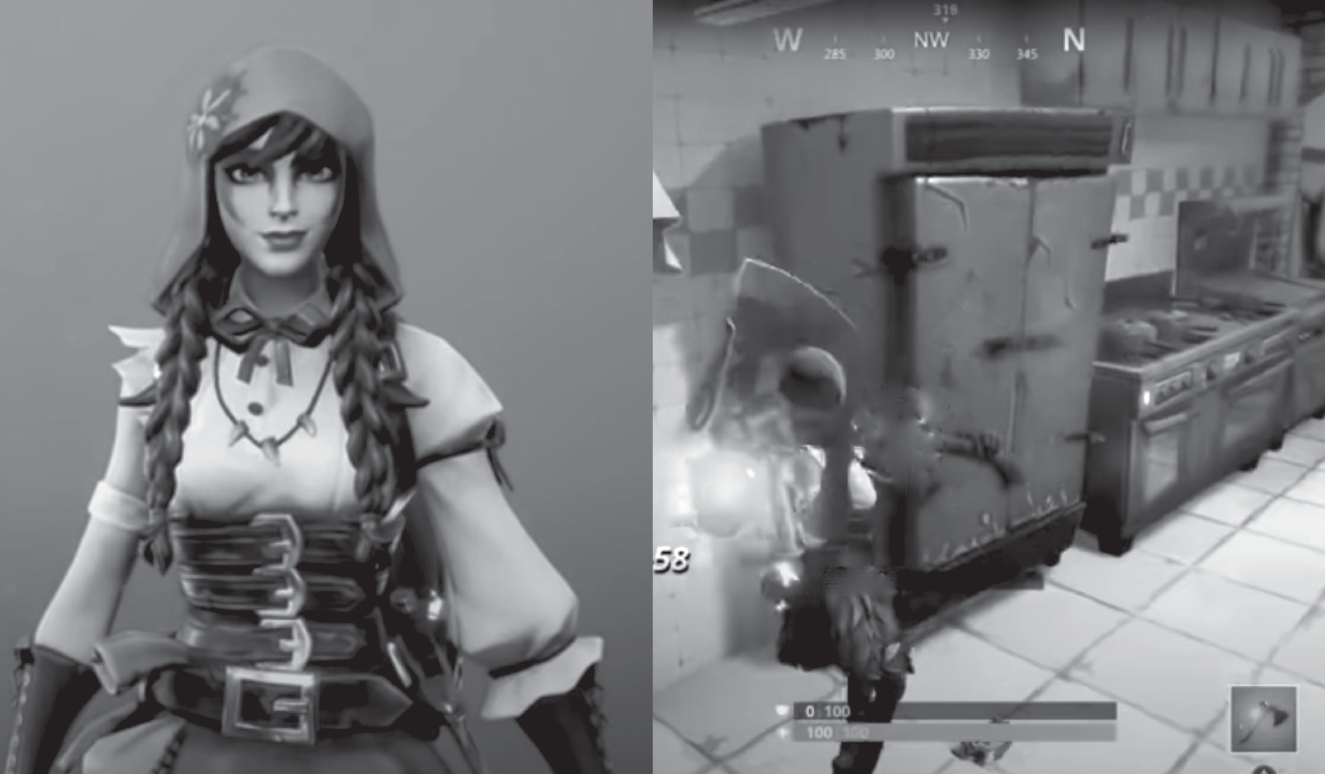
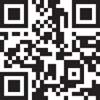 Figure 7.6 Wendy's actually paid someone to play Fortnite and kick ass live on the gamers' channel, Twitch. She didn't play by the game rules and just destroyed all the freezers at a virtual burger chain.
Figure 7.6 Wendy's actually paid someone to play Fortnite and kick ass live on the gamers' channel, Twitch. She didn't play by the game rules and just destroyed all the freezers at a virtual burger chain.
When it comes to brand storytelling there are a few differences from classic story structure. The three-act format is more applicable to a self-contained story, like a 30-second commercial. But the brand story is a longer tale told over time and should remain open-ended.
A final word of caution. Remember, your story must be a great one. No amount of multi-platform razzle dazzle will save a boring story. As you investigate the feasibility of this kind of storytelling on behalf of your brand, keep both your product and your customers firmly in mind. An alternate reality game, for instance, is probably not the right way to introduce, say, a new heart medication. Author Stefan Mumaw had some good advice in this regard in Chasing the Monster Idea.
The hardest part of using stories effectively is making sure they're simple—that they reflect your core message. It's not enough to tell a great story, the story has to reflect your brand. Without this relevance, the story teaches nothing and we, as humans, are constantly looking for order and lessons from the stories we consume.6
NOTES
- 1. Josh Weltman, Seducing Strangers: How to Get People to Buy What You’re Selling (New York: Workman Publishing, 2015), 81.
- 2. Pelle Sjoenelle and PJ Pereira, The Art of Branded Entertainment (London: Peter Owen, 2018), 122.
- 3. Alex Bogusky and John Winsor, Baked In: Creating Products and Businesses That Market Themselves (Evanston, IL: Agate B2, 2009), 112–113.
- 4. Jean-Marie Dru, Disruption: Overturning Conventions and Shaking Up the Marketplace (Hoboken: John Wiley & Sons, 1996).
- 5. Frank Rose, The Art of Immersion: How the Digital Generation Is Remaking Hollywood, Madison Avenue, and the Way We Tell Stories (New York: W. W. Norton, 2011).
- 6. Stefan Mumaw, Chasing the Monster Idea: The Marketer’s Almanac for Predicting Idea Epicness (Avon, MA: Adams Media, 2011), 161.
- * As we continue to discuss tensions or conflicts, interpret the words liberally: tensions, conflicts, polarities, opposites; any kind of opposing energies will do.
- ** Ad students should be required by law to scour YouTube and view all the famous old FedEx commercials from the early ’80s and other work by the brilliant director, Joe Sedelmaier. Got milk? commercials from the ’90s should also be required viewing.
- * If you want to see a really stupid idea I came up with to sell bananas, go to heywhipple.com and type “tarantula-free bananas” in the search bar. The movie you will see there is very stupid, but you may agree I found a narrative based on a tension. And sorry, no refunds on the two minutes of your life you will have just wasted.
